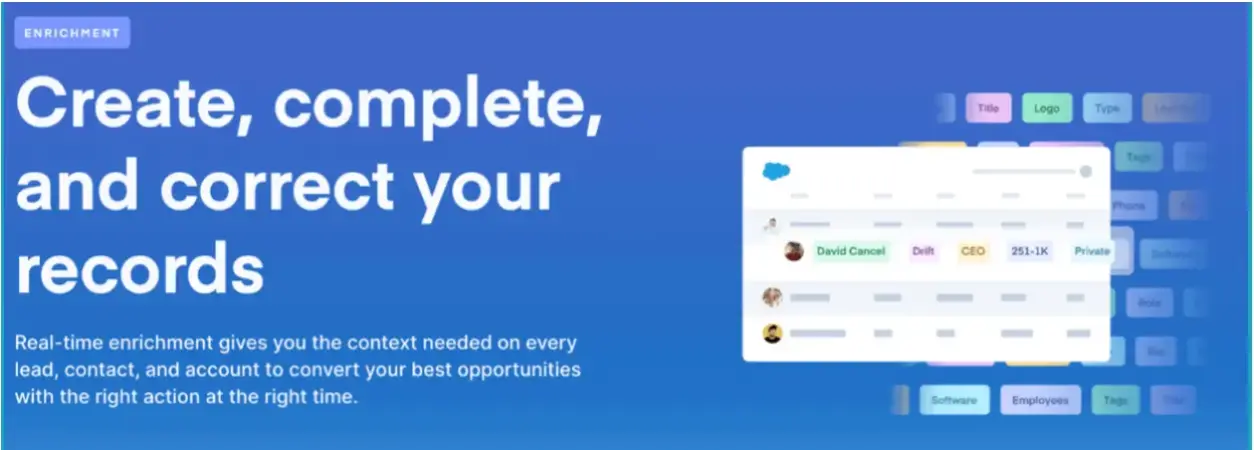Though dozens of other communication methods have sprung up since the advent of the internet, email marketing has always remained a constant.
*Updated 7/23/2024
You probably already know a few things about the massive potential of email marketing. But did you know that small businesses gain a remarkable return on investment through email marketing, earning an average of $36 for every U.S. dollar spent?
The retail, ecommerce, and consumer goods industry lead the pack with the highest ROI at $45, showcasing their expertise in leveraging email campaigns for maximum profitability.
Still, like many startup owners, you may feel lost when getting started with this particular marketing discipline.
To help you clear up some of the confusion and help answer the questions, “How do I get going with email marketing for my startup?”
Here are eight examples of tools and strategies to help you maximize conversions right out of the gate. Skip ahead for Essential Email Marketing Strategies below.
Email Marketing Tools for Startups
Article Shortcuts:
- Email marketing suites
- Data enrichment email marketing tools
- Landing page builders
- Email list cleaner and verification tools
If your email marketing strategy and arsenal are bare, here are some of the best tools you can adopt to ensure your email marketing gets off to a good start.
1. Email marketing suites
When taking those initial steps into the email marketing arena, a complete email marketing suite is one of the first tools to look into.
SaaS tools such as Mailchimp, Constant Contact, SendX, and SendinBlue can go a long way towards simplifying the email marketing process and often come with some great analytics.
AI tools that will help you fine-tune campaigns in progress for better conversions. Depending on your chosen tool, you may also have access to features such as audience segmentation, custom sign-up forms, and landing pages.
An email marketing suite won’t answer all your problems, and most successful marketers will use email marketing services in conjunction with various other tools to plan and execute their campaigns.
However, with such a versatile array of features, adopting a reputable email verification tool is a no-brainer for any startup entrepreneur looking to get started with email marketing.
2. Data enrichment email marketing tools
In many marketing disciplines, including email marketing, generic copy, and content is nearing extinction.
Today, personalized marketing materials based on highly granular data sets are from the eyes of modern-day consumers, and this trend will only increase in line with the growing purchasing power of Gen Z shoppers.
Better personalization means better conversions, and to ensure you’re targeting and personalizing your email campaigns as best as possible, you’ll need an effective way to organize the reams of data that pertain to your target audience.
Data enrichment tools such as Clearbit are email marketing software suites that merge data from your databases with third-party data, giving you deeper insights and a broader scope for personalization.
Simply enter a domain or an email address, and these tools will return useful data from hundreds of sources sorted into distinct fields you can use to inform your campaigns, such as business sector, job title, and more.
3. Landing page builders
Getting contacts to open an email and click through is only half the battle. From there, it’s a matter of getting prospects over the line with the content on your site.
Take a moment to think about the pages where you want your customers to convert. If these pages aren’t high-quality, user-friendly, and equipped with a CTA that serves as a proper next step after your email content, these pages could be losing conversions.
Today, plenty of tools on the market, like UnBounce, can help optimize landing pages linked to various marketing channels, including email.
These landing page builders include content tools that will allow you to build stunning, customized landing pages and innovative machine learning features capable of creating page layouts based on your customer data and even writing copy that’s more likely to convert.
4. Email list cleaner and verification services
Analyzing the performance of your email campaigns while they’re in progress is an essential part of email marketing. Still, this analysis should begin before a campaign has started for a genuinely great ROI.
With an email list verification/cleaner service, you can separate deliverable and undeliverable email addresses in your list before a campaign gets started and ensure that you’re spending your time and resources on verified quality prospects.
Though you may want to get things moving quickly, running an email campaign based on outdated or unqualified data can immensely damage your results.
On the other hand, if you equip yourself with a method of email verification from the very beginning, you’ll drive down bounces, maximize your conversions, and enjoy an overall more substantial ROI.
GetID online id verification service enables you to automate the verification process and reduce your compliance team’s workload.
Essential Email Marketing Strategies
Article Shortcuts:
- Mobile optimization
- Using dynamic content
- Granular segmentation and prospecting
- Constant A/B testing
Now that we’ve broken down some essential email marketing tools that go into a successful email campaign let’s look at how to apply these tools with proven email marketing strategies for better conversions.
5. Mobile optimization
Most people read marketing emails on a mobile device, like any other content. With this in mind, ensuring you optimize your emails for mobile should be at the top of your list regarding email strategies.
Most modern consumers will ignore emails that aren’t mobile-friendly, so don’t cheat yourself out of all that potential business!
Many of the email marketing tools listed in the first half of this article will have features for creating responsive email content that will look great on desktop, laptop, and mobile screens.
However, if you’re taking a more manual approach in the early days of your brand, you can do a few things to make sure your emails are mobile-friendly.
Keeping subject lines brief (30-35 characters), using a single-column structure, keeping images compressed, and using a large, clear font are all simple changes that can profoundly affect your campaign results.
6. Using dynamic content
We’ve said it before, and we’ll say it again: personalized content quickly becomes necessary for any successful campaign in any marketing discipline.
If you’re not trying to craft messaging that speaks to your customers individually, you’ll soon start to lose that business to a competitor who does.
Dynamic content (sometimes called adaptive content) refers to automatically-populated content blocks in a marketing email that will change according to various data fields about the recipient, such as their demographics or interests.
Automating email personalization in this way will help your click-through and conversions and save you precious time and resources when managing your email campaigns.
7. Granular segmentation and prospecting
In modern marketing, consumers are bombarded by countless pieces of content expertly tailored to their preferences.
Although tools and strategies tend to work better on average in every marketing discipline, no one approach will appeal to everyone in your target market.
If you want your content to stand out from the noise, you need to segment your audience more granularly than the next best competitor.
To ensure email marketing success now and in the future, you need to segment your audience and qualify all potential leads in a way that’s informed not only by their location, purchasing history, and other standard data sets but also by the way that they interact with your site, your social content, the way they browse your products, and more.
We recommend checking out ‘The State of Prospecting’ from leading prospecting expert Sopro for a deeper understanding of sales-qualified prospecting.
The study uses original data from 25 million emails across 82 B2B industries over five years. The more detailed you can get with your segments and prospecting, the more personalized your content will be, leading to tremendous success in your email marketing.
8. Constant A/B testing
You can read and apply all the generic email marketing strategy tips worldwide. Still, none of these will be less valuable than the information generated by your customers.
Don’t rely on articles like these to tell you the best style of copy or email structure - let your customers tell you instead!
Although effective A/B testing takes careful planning, time, and patience, the investment can pay off massively, ensuring better open, click-through, and conversion rates.
Furthermore, when your branding and copy are consistent across different marketing channels, A/B testing emails can give you valuable insights that you can use in campaigns elsewhere.
A/B testing can often fall by the wayside after the first year or two of a startup’s life due to the belief that you’ve gathered enough results to craft quality emails indefinitely.
It’s important to remember that your audience is constantly evolving, and you can be continually testing every aspect of an email for better optimization.
Don’t let yourself fall into complacency after a few successful tests, and try to guide your marketing team toward a culture of constant testing and refinement.
In Summary
We hope this round-up of email marketing software tools and strategies has helped answer the “How do I get going with email marketing for my startup?” question and helped you reap the best email marketing results possible now and in the future.
Getting well-equipped for modern email marketing takes a lot of time and research, but by ensuring you have the right tools for the job, you’ll be able to avoid common pitfalls and improve your chances of a consistently great ROI from day one.
Author Bio
Niamh specializes in productivity hacks and thought leadership for small to medium sized businesses, utilising her deep understanding of software applications in this field to aid growth. She works closely with clients to create content that will not only help improve search rankings, but will also enhance branding and create a tone of voice that potential customers can connect with.




